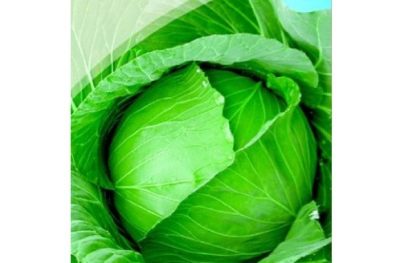
- Appointment: for fresh consumption, for fermentation
- Weight, kg: 2,0-4,0
- Taste qualities: excellent
- Yield: high
- Average yield: 10.0 kg / m2
- Ripening terms: late ripening
- The period from germination to technical ripeness: 145-160 days
- Transportability: good
- The form: rounded flat
- Disease and pest resistance: stable
Langedeiker is a variety of white cabbage developed by German breeders. This is a late variety, which in recent years has begun to replace earlier and more productive hybrids, but some Russian summer residents still value it for the possibility of industrial cultivation.
Description of the variety
The culture is grown in the open field. The variety has a good yield, dense heads of cabbage, excellent transportability. All this makes the German subspecies suitable for commercial cultivation.
Characteristics of the appearance of the plant and heads of cabbage
The plant is undersized, up to 40 centimeters. Heads of cabbage are characterized by a large size, their weight is 2-4 kg, the shape is usually round-flat, outside the forks are painted green.
Purpose and taste
These are rather dense heads of cabbage, the taste of which is highly appreciated by consumers. This variety is suitable both for fresh consumption and for pickling, but, according to some gourmets, the second option is preferable, since the leaves of this variety are still rough if you try them fresh.
Ripening terms
From the appearance of the first shoots to the stage of technical maturity of fruits, 145-160 days pass, which is typical for late-ripening varieties of cabbage. Harvesting usually takes place in September-October.
Yield
It is a high-yielding variety that can, on average, yield 10 kg of vegetables per square meter.
Growing and care
Sowing for seedlings is carried out in April, bushes are transplanted to the summer cottage in May. Growing by a seedling method is also allowed. To do this, the seeds are sown in early May immediately on the garden bed, but first it is important to make sure that the earth is warmed up to at least +14 degrees. To speed up the germination process, the bed is covered with plastic wrap.
When grown through seedlings, the seeds are planted in a container, leaving 5-7 cm between them. Then the container is placed in a warm place where the temperature is maintained at + 20-25 degrees. When seedlings appear, the temperature can be reduced to +15 degrees.
In open ground, the bushes are planted according to the scheme 60x60 cm, by the day of transplantation, the seedlings usually already have 2-3 pairs of leaves. The selected area should be abundantly illuminated by sunlight. Aftercare consists of the following processes.
- Watering. The culture needs to be moistened about once a week; at one time, 3 liters of water is applied to each bush. It is better to carry out the watering procedure in the evening so that the moisture does not evaporate under the daytime sun. The day after irrigation, it is advisable to loosen the soil so that oxygen can freely penetrate the roots of the plant, as well as weed out the weeds.
- Top dressing. Fertilizer is applied twice a season. The first top dressing will be required 20 days after transplanting seedlings or after sowing seeds in the ground with seedless cultivation. During this period, an organic solution is suitable. The second time the bushes are fed at the beginning of flowering, and now solutions from mineral compositions are more suitable.

To grow a rich cabbage crop, you need to know when and how to plant this crop outdoors. Planting dates are determined depending on the variety. It is also necessary to properly prepare the soil and follow the rules of crop rotation.



Cabbage requires particularly careful care when growing. The plant quickly absorbs nutrients, so the soil needs to be enriched regularly. Adequate amounts of minerals, organics and nitrogen must be provided. Some products can be purchased at the store, while others are easy to make at home.
Disease and pest resistance
This German guest has a strong immunity against diseases and pests, he is not prone to cracking the heads of cabbage, however, if the rules of agricultural technology are not followed, he can still occasionally be affected by some parasites. Among ailments, keela and tobacco mosaic are widespread, colloidal salt will help get rid of the first disease, and "Regent" or "Taboo" will help get rid of the second.
Sometimes the plant attacks aphids, you can fight it by means of copper-containing compounds, for example, "Oxychoma". Another enemy of the vegetable is a flea; Bordeaux liquid has proven its effectiveness against this individual.

Cabbage is a very popular horticultural crop. But growing a good, large and tasty cabbage is sometimes very difficult, because it is often affected by a huge number of diseases and pests. The main role in the cultivation of this vegetable is played by regular prevention, which helps to get a rich harvest, and prevent the occurrence of diseases and the invasion of harmful insects. It is very important to start treatment as early as possible, otherwise there is a risk of spreading the infection to unaffected plants.
Review overview
Consumers appreciate the cold resistance of the variety, as well as its taste, but many are confused by the size of the heads of cabbage. The leaves are small and rough, that is, this variety will not work for stuffed cabbage. But he is not prone to cracking and easily survives even rainy seasons. Another advantage is the long shelf life in the cellar.























































































